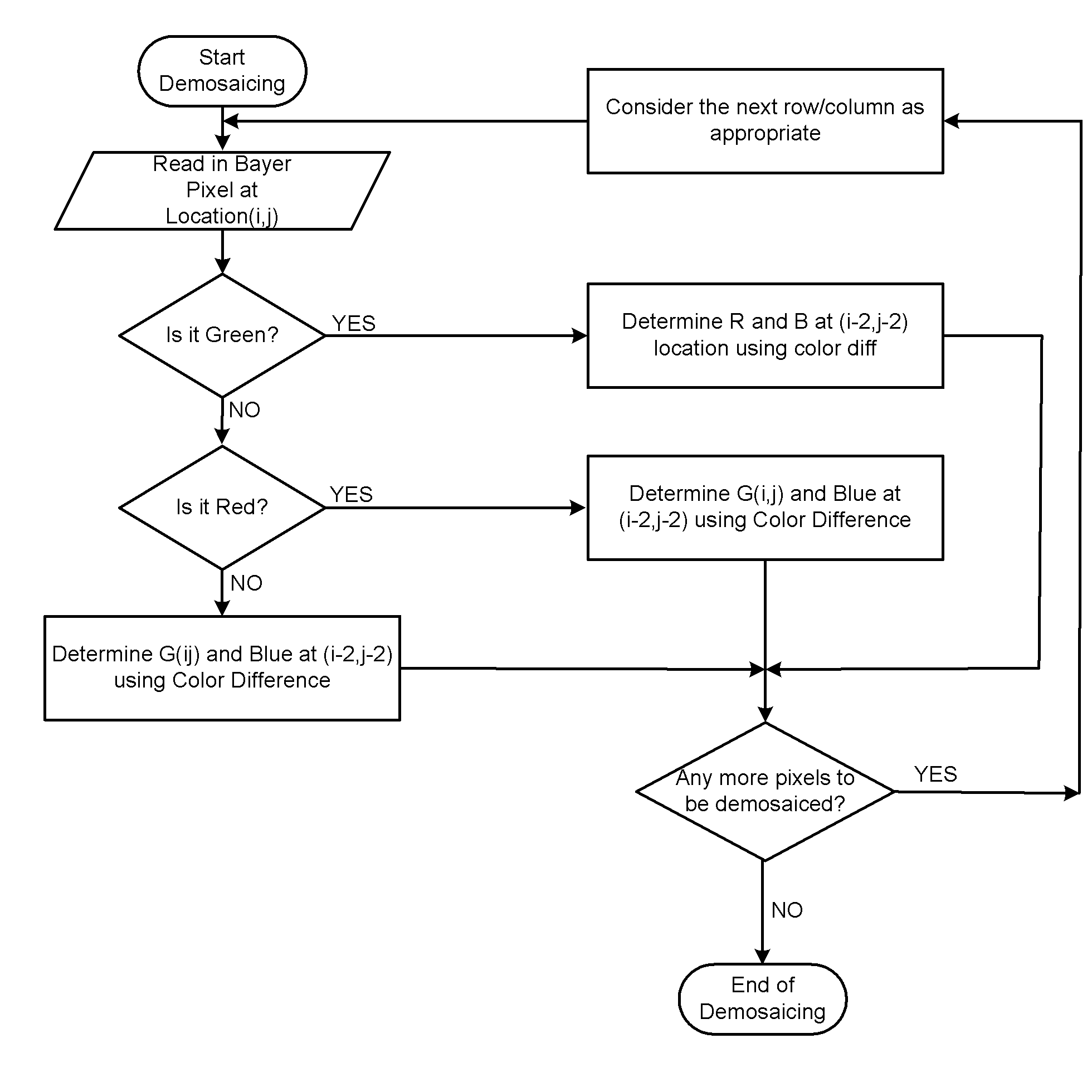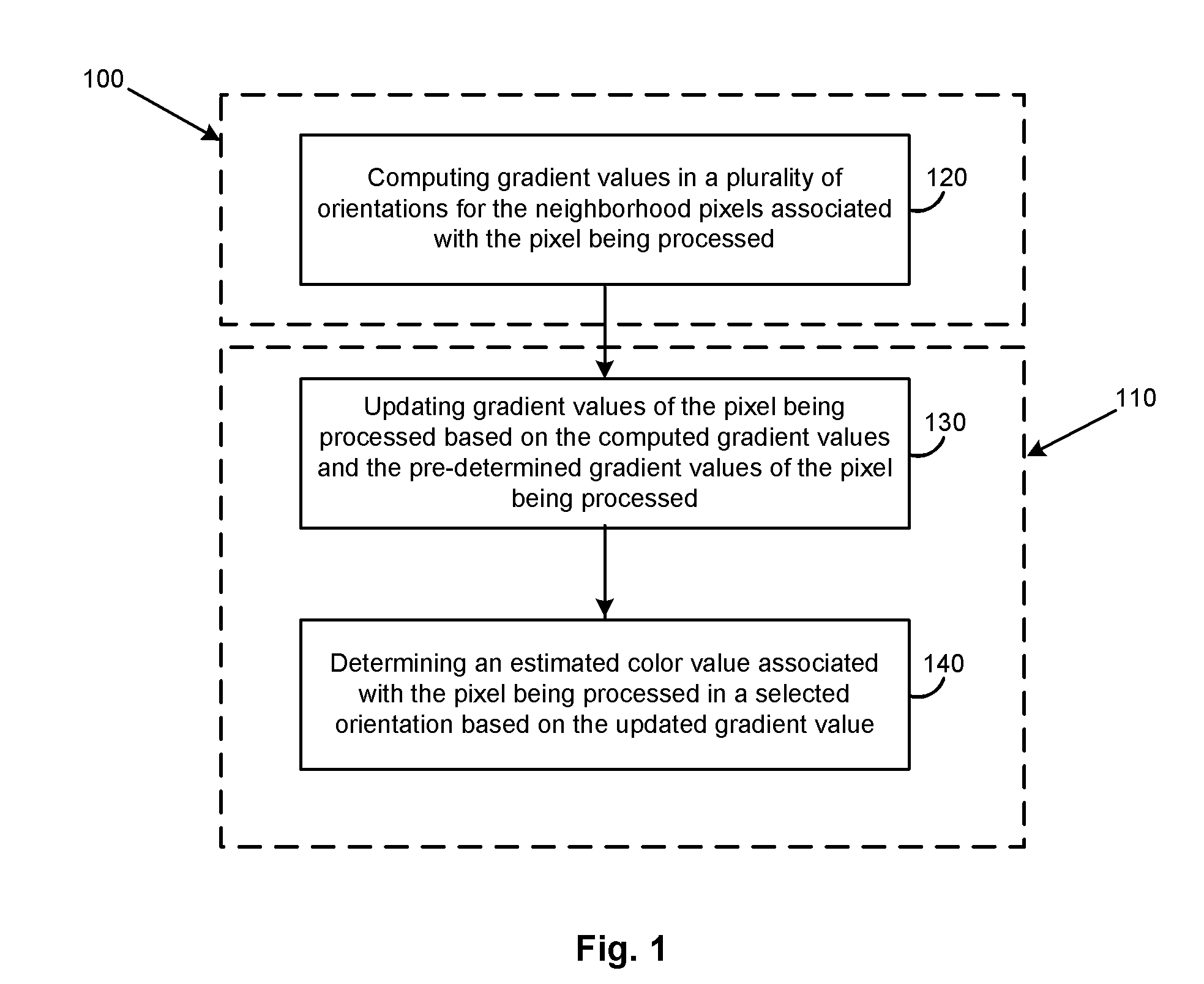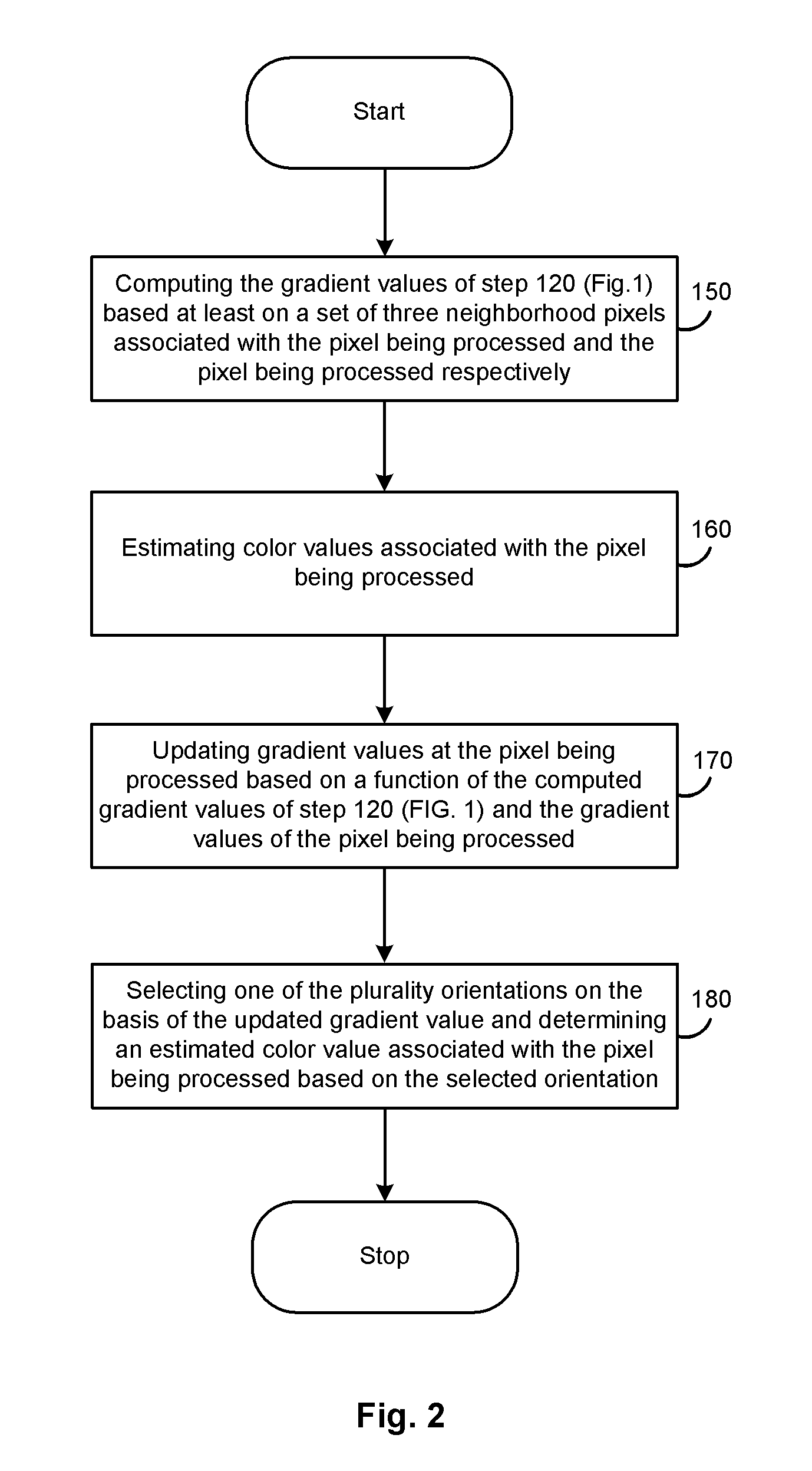Method of demosaicing a digital mosaiced image
a demosaicing and mosaiced image technology, applied in the field of digital image processing, can solve the problems of poor quality of demosaicing images obtained from conventional techniques that are suitable for embedded applications, difficult to manage from a memory complexity point, and unsuitable for embedded applications
- Summary
- Abstract
- Description
- Claims
- Application Information
AI Technical Summary
Problems solved by technology
Method used
Image
Examples
example 1
[0052]An example to illustrate gradient constancy is provided hereinbelow:
[0053]In an image neighborhood, even if for a single pixel the computed gradient is not same as the actual gradient then it will result in artifacts in the demosaiced image. To prevent this the following gradient constancy enforcement method is employed.
[0054]FIG. 3 (a) is an example Bayer Array, where R13 is the pixel that is being processed, then the gradient is calculated for the R25 pixel, which is the current pixel. So ΔH and ΔV for R25 is obtained and the following decision can be done, ΔH is the horizontal gradient of R25 and ΔV is the vertical gradient of R25[0055]If ΔH[0056]Gradient (i,j)=1[0057]Else[0058]Gradient (i,j)=−1.[0059](i,j) are the coordinates of the R25 pixel location.
In this example, since the final value of Green pixel G13 is to be obtained at R13 location, a 5×5 window is taken around R13, which is depicted in FIG. 3(a).
[0060]Further, in this example, gradient is a table that stores the...
example 2
[0071]An example equation illustrating the method in accordance with an embodiment is disclosed hereinbelow. FIG. 5 illustrates an example 7×7 Bayer area. In this example, to determine green G13 at red pixel R13, the color difference R-G at the center pixel in the horizontal direction is determined as,
R13−G13=α*(R11−G11)+β*(R12−G12)+γ*(R14−G14)+δ*(R15−G15)
i.e., the color difference at the center pixel is determined as the weighted average of the color difference of the neighboring pixels in the example horizontal orientation. The weights in this example add up to unity (α+β+γ+δ=1).
In the present implementation weights are chosen to be one of the following two sets (with no loss of generality)
α=¼, =¼, γ=¼, δ=¼
α=⅛, β=⅜, γ=⅜, δ=⅛. It is to be appreciated that the weights in computing constant color difference formula can vary from the ones disclosed herein and can be adaptive.
[0072]In the above expression, all the colors are not known. R11, G12, R13, G14 and R15 are known. Since the pi...
example 3
[0074]An example illustrating the method in accordance with the above embodiment of the invention is disclosed hereinbelow: In this example method a weighted average of the horizontal and the vertical interpolated or demosaiced values are taken with weights governed by the value of the gradient
[0075]The sum of the gradient values are computed. The gradient values can be obtained as indicated in example 2 disclosed hereinabove for computing G13.
S13=ΔH+ΔV.
Horizontal and vertical gradients are divided with the sum to get the normalised example horizontal and vertical gradients.
NΔH=ΔH / S13
NΔV=ΔV / S13
This process makes NΔH+NΔV=1, so that they can be used as weights. The final green value, in this example is thus obtained using a combination of the horizontal and vertical estimates with the normalized values obtained used as weights as given hereinbelow:
G13=NΔH*G13V+NΔV*G13H.
For instance: if ΔH=1.7 and ΔV=3, then S13=4.7 and finally NΔH=0.361 and NΔV=0.639. Also NΔH+NΔV=1.
The inverse grad...
PUM
 Login to View More
Login to View More Abstract
Description
Claims
Application Information
 Login to View More
Login to View More - R&D
- Intellectual Property
- Life Sciences
- Materials
- Tech Scout
- Unparalleled Data Quality
- Higher Quality Content
- 60% Fewer Hallucinations
Browse by: Latest US Patents, China's latest patents, Technical Efficacy Thesaurus, Application Domain, Technology Topic, Popular Technical Reports.
© 2025 PatSnap. All rights reserved.Legal|Privacy policy|Modern Slavery Act Transparency Statement|Sitemap|About US| Contact US: help@patsnap.com



